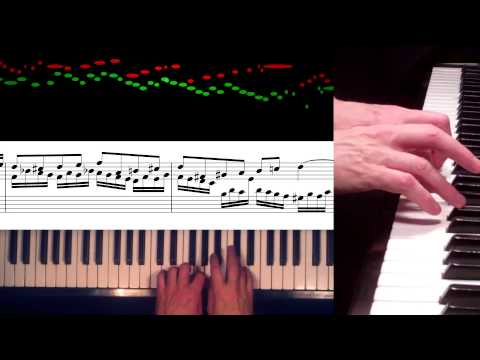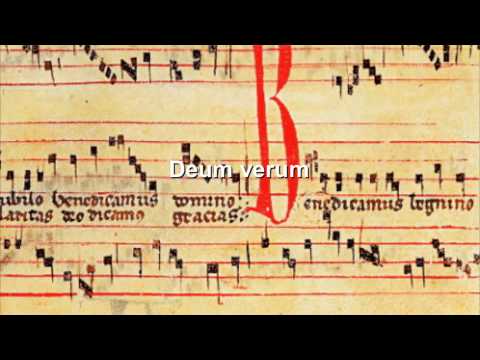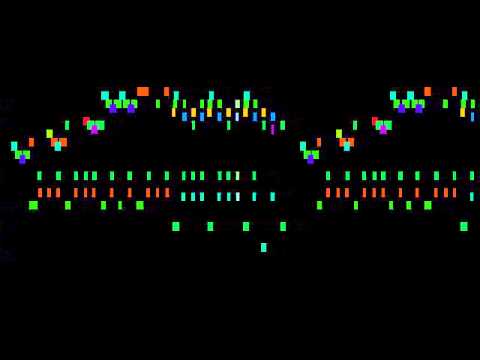1.38: Texture
- Page ID
- 72531
This document covers the three musical textures we will encounter in our studies: monophony, polyphony, and homophony. Texture is an element you will use when identifying pieces from all the periods of music history so you’ll want to study this material very carefully. At the end of the reading assignment you’ll find links to three pieces you can listen to; see if you can identify the textures of the pieces based on your reading.
Introduction
Texture is one of the basic elements of music. When you describe the texture of a piece of music, you are describing the relationship of melodic and (sometimes) harmonic elements with each other. For example, the texture of the music might be thick or thin, or it may have many or few layers. It might be made up of rhythm only, or of a melody line with chordal accompaniment, or many interweaving melodies. Below you will find some of the formal terms musicians use to describe texture.
Terms that Describe Texture
There are many informal terms that can describe the texture of a piece of music (thick, thin, bass-heavy, rhythmically complex, and so on), but the formal terms that are used to describe texture all describe the relationships of melodies and, if present, harmonies. Here are definitions and examples of the three main textures you will encounter in our class.
Monophonic
Monophonic music has only one melodic line, with no harmony or counterpoint. There may be rhythmic accompaniment, but only one line that has specific pitches. Monophonic music can also be called monophony. This texture is used very little in music of the Western European tradition after the Middle Ages.
Examples of Monophony
- One person whistling a tune
- A single bugle sounding “Taps”
- A group of people all singing a single melody together without harmony or instrumental accompaniment
- A fife and drum corp, with all the fifes playing the same melody
Polyphonic
Polyphonic music can also be called polyphony, counterpoint, or contrapuntal music. If more than one independent melody is occurring at the same time, the music is polyphonic.
Examples of Polyphony
- Rounds, canons, and fugues are all polyphonic. (Even if there is only one melody, if different people are singing or playing it at different times, the parts sound independent.)
- Much late Baroque music is contrapuntal, particularly the works of J.S. Bach.
- Most music for large instrumental groups such as bands or orchestras is contrapuntal at least some of the time.
- Music that is mostly homophonic can become temporarily polyphonic if an independent countermelody is added. Think of a favorite pop or gospel tune that, near the end, has the soloist “ad libbing” while the back-up singers repeat the refrain.
Homophonic
Homophonic music can also be called homophony. More informally, people who are describing homophonic music may mention chords, accompaniment, harmony or harmonies. Homophony has one clear melodic line; it’s the line that naturally draws your attention. All other parts provide accompaniment or fill in the chords. In most well-written homophony, the parts that are not melody may still have a lot of melodic interest. They may follow many of the rules of well-written counterpoint, and they can sound quite different from the melody and be interesting to listen to by themselves. But when they are sung or played with the melody, it is clear that they are not independent melodic parts, either because they have the same rhythm as the melody (i.e. are not independent) or because their main purpose is to fill in the chords or harmony (i.e. they are not really melodies).
Examples of Homophony
- Choral music in which the parts have mostly the same rhythms at the same time is homophonic. Most traditional Protestant hymns and most “barbershop quartet” music is in this category.
- A singer accompanied by a guitar picking or strumming chords.
- A small jazz combo with a bass, a piano, and a drum set providing the “rhythm” background for a trumpet improvising a solo.
- A single bagpipes or accordion player playing a melody with drones or chords.
Suggested Listening
Monophony
- Any singer performing alone
- Any orchestral woodwind or brass instrument (flute, clarinet, trumpet, trombone, etc.) performing alone. Here is an example from James Romig’s Sonnet 2, played by John McMurtery.
- A Bach unaccompanied cello suite
- Gregorian chant
- Most fife and drum music
- Long sections of “The People that Walked in Darkness” aria in Handel’s “Messiah” are monophonic (the instruments are playing the same line as the voice). Apparently Handel associates monophony with “walking in darkness”!
- Monophony is very unusual in contemporary popular genres, but can be heard in Queen’s “We Will Rock You.”
Polyphony
- Pachelbel’s Canon
- Anything titled “fugue” or “invention”
- The final “Amen” chorus of Handel’s “Messiah”
- The trio strain of Sousa’s “Stars and Stripes Forever”, with the famous piccolo countermelody
- The “One Day More” chorus from the musical “Les Miserables”
- The first movement of Holst’s 1st Suite for Military Band
- Polyphony is rare in contemporary popular styles, but examples of counterpoint can be found, including the refrain of the Beach Boys’ “Good Vibrations,” the second through fourth verses of Simon and Garfunkel’s “Scarborough Fair/Canticle,” the final refrain of Jason Mraz’s “I’m Yours,” and the horn counterpoint in Ghost of a Saber Tooth Tiger’s “Lavender Road.”
Homophony
- A classic Scott Joplin rag such as “Maple Leaf Rag” or “The Entertainer”
- The “graduation march” section of Edward Elgar’s “Pomp and Circumstance No. 1”
- The “March of the Toreadors” from Bizet’s Carmen
- No. 1 (“Granada”) of Albeniz’ Suite Espanola for guitar
- Most popular music genres strongly favor homophonic textures, whether featuring a solo singer, rapper, guitar solo, or several vocalists singing in harmony.
- The opening section of the “Overture” Of Handel’s “Messiah” (The second section of the overture is polyphonic)
Assignment
Once you have completed the reading on musical texture, choose one of the pieces listed below and listen to the piece on YouTube. After listening to your selection, please answer the questions below.
Two-Part Invention in C Major by Johann Sebastian Bach
Deum Verum by an anonymous composer
Rondo Alla Turca by Wolfgang Amadeus Mozart
(Texture is most obvious in the first 20 seconds.)
Questions
- Which piece did you select? (simply copy and paste the title)
- Which of the three textures described above is represented by the piece you selected?
- What did you hear that enabled you to identify the texture? (1 or 2 sentences—use the explanations on the previous page as a reference but do not copy. I want to hear how you express this in your own words.)
Textures
Check to see if you correctly identified the textures of the three pieces listed in the reading assignment on musical texture.
- Two-Part Invention in C Major by Johann Sebastian Bach: Polyphony
- Deum Verum by an anonymous composer: Monophony
- Rondo Alla Turca by Wolfgang Amadeus Mozart: Homophony
Contributors and Attributions
- Authored by: Elliott Jones. Provided by: Santa Ana College. Located at: http://www.sac.edu. License: CC BY: Attribution
- Texture. Authored by: Catherine Schmidt-Jones . Provided by: OpenStax. Located at: http://cnx.org/contents/04ac529b-2695-4994-b5a6-22a3776d69e3@14. License: CC BY: Attribution




